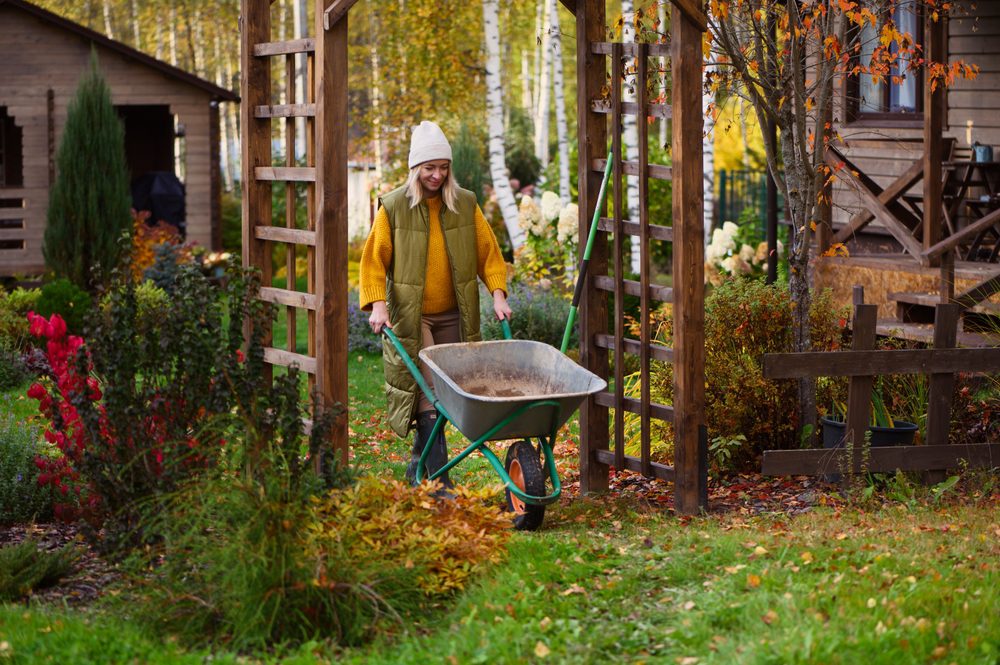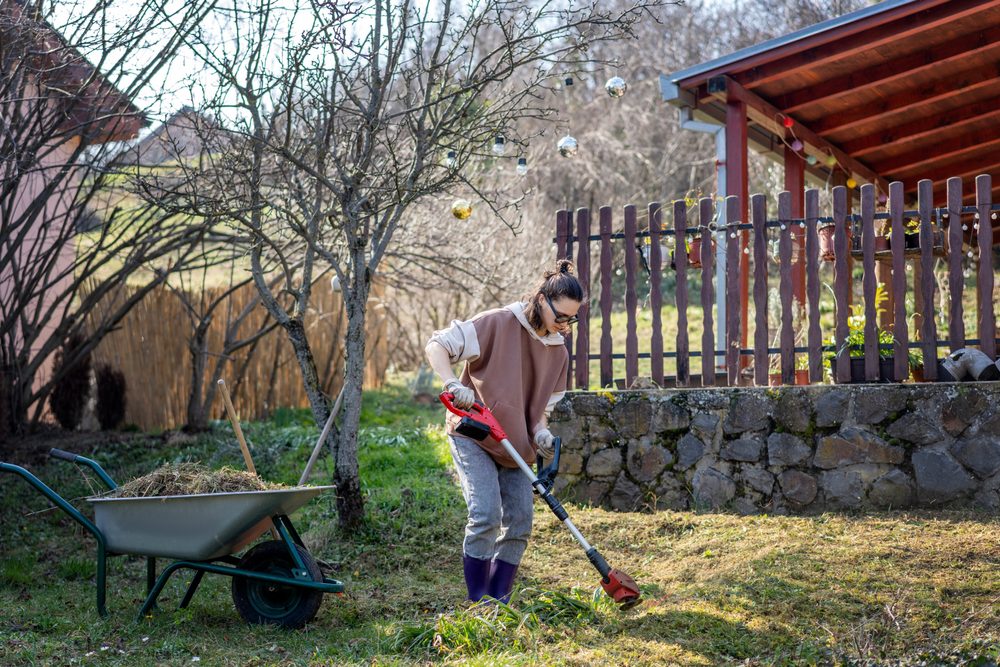Do You Want a Nice Backyard? Here Are 12 Tasks to Do Before Winter Comes!
When we’re saying goodbye to the dog days of summer, we start preparing for autumn’s cooler temperatures. But really now, the preparation is rather slow and contemplative, and the tasks are almost nonexistent: we move the perennials indoors, take a sip of coffee, admire the leaves—you know how it goes.
Fall is the perfect time to sip your coffee outside because the colors are so beautiful. Also, few tasks are done, and rightfully so. But as fall is almost over, we really need that impulse to get back to work.
As it turns out, that impulse is the arrival of frost, as has been told in the ancient scriptures. We’d highly recommend you be efficient before that happens if you really want that pretty garden in the spring. Here are some of the most important tasks you need to do before the first frost!

Mulch garden beds
The weather gets cooler, and it’s time to put the garden to bed under a blanket of mulch. There are a few tasks that need to be done to protect the annuals and perennials from cold temperatures, but you can start by covering them with a 4-inch layer of organic material.
Whether we’re talking about shredded wood or wood chips, leaves, or straws, these will effectively take care of your plants during the cold season.
When it comes to shrubs, trees, and rosebushes, you might want to wait to spread the mulch until later in the season, when the soil is cool but not frozen.
Deadhead garden plants
Insects adore overwintering beneath dead flowers, leaves, and any other plant material. You can roll up the welcome mat by raking away fallen leaves, deadheading the annuals, and even running perennials and roses. Moreover, you might also want to clear out the summer vegetables before the first frost sets in.
Bring in container plants.
As nighttime temperatures sink below 50 degrees Fahrenheit, it might be time to move those container plants indoors. Before welcoming them into your cozy, warm home, make sure you dip away any dead or damaged leaves or branches.
Also, you might want to check for insects. You never know what surprise guests you might bring indoors.
Plant bulbs
Well, nothing says spring like a bunch of colorful tulips, daffodils, crocuses, irises, and hyacinths. However, if you want to enjoy those wonderful beauties as soon as spring starts, you will have to plant their bulbs in the fall.
As a general rule, northern gardeners usually plant spring-blooming bulbs in late September through mid-October, but southern gardeners can easily wait until mid-October or even early November.
Seal drafts
The only thing that matters during wintertime is to keep warm air in and cold air out and make sure you reduce your heating bills at the same time. Well, in order to do that, you have to take care of any leaky doors or windows.
You might want to check for drafts by turning off fans or even air conditioners, then holding a lit stick of incense close to the doors or windows.
If the smoke is sucked outside, you will know there’s something you need to fix. But luckily, there’s an easy fix: just caulk any cracks or chips around your windows and install weatherstripping to ward off any drafts around your doors.
Check smoke detectors.
As the National Fire Protection Association stated, three out of five resident fire deaths happen in a home that either has no smoke detector or has nonfunctioning batteries.
And that’s where we enter the scene, and we highly recommend that you avoid becoming a statistic. Make sure you check your smoke and carbon monoxide detectors at least twice a year, once in the fall and again in the spring.

Inspect the fireplace.
It might be a good idea to have your home’s chimney inspected and swept right before fireplace season. This job would be better done by a pro, someone you could pay around $150 for a professional chimney inspection.
However, if you’re more comfortable on the roof, you could also do some preliminary work yourself. First, you need to clear out any fallen leaves, birds’ nests, or any other type of debris that might come from the chimney.
Also, you want to repair any small cracks in the masonry with some refractory cement, which is usually formulated to withstand high temperatures. Make sure the damper moves smoothly. It might be either cracked, rusted, or warped, in which case you should clean away the soot, creosote, and ash.
Paint the entry door trim.
If you’ve been thinking of refreshing your entry door, well, a new coat of paint might do the trick. Entry doors and trims are quite hard workers in most homes, and they also have the cuffs and smudges to prove it.
All you have to do is paint the trim and clean the door, and it will give your entry the polished look you’ve been waiting for.
Reseed the lawn.
If you want your lawn to look tip-top during spring, then you will have to sow grass seed from early through mid-fall. As you might know already, reseeding the lawn will give gardeners in cold-winter areas a head start in the spring.
As the weather warms up, the grass will slowly germinate, crowd out the weeds, and develop a strong root system right before the high heat of summer.
If you live in a region with warm winters and want to keep the grass green throughout the seasons, sow annual ryegrass in the early fall. This rapid-sprouting grass will immediately look better through the chill months, then slowly die down once the high temperatures return.
Seal the driveway.
If you have an asphalt driveway in front of your house, reseal it in the fall when it’s still warm and there’s no rain in the forecast. For the wide majority of places, that time has already passed (but maybe you’re lucky to live in an area with a warm winter!).
First, you need to sweep away the dirt, leaves, and any other type of debris from the asphalt. Then, you will have to pour asphalt sealant over the driveway. With a squeegee specifically made for asphalt, spread the sealant across the driveway’s entire surface.
Inspect the roof.
Winter can be quite hard on your roof, especially if we’re talking about rain, snow, or freezing temperatures. More than that, high winds can easily take their toll on it.
That’s one of the reasons why fall is the best time to make sure your roof is ready for the challenge and undergo any necessary repairs before the cold season sets in. You can even hire a professional for this kind of service, or if you’re up for the task, even do it yourself.
Buy a better rake.
Autumn usually means raking leaves, which also means back pain. You can make the job easier by buying a very good rake. The right one will be long enough to gather the leaves in one place where you don’t have to bend over.
It’s also flexible but durable, making it easier to scoop up debris, and it also has a comfy and ergonomic grip, so your hands won’t feel strained. Here’s our recommendation!
If you found this article useful, we also recommend reading Stop Freezing This Winter With These 14 Clever Hacks















